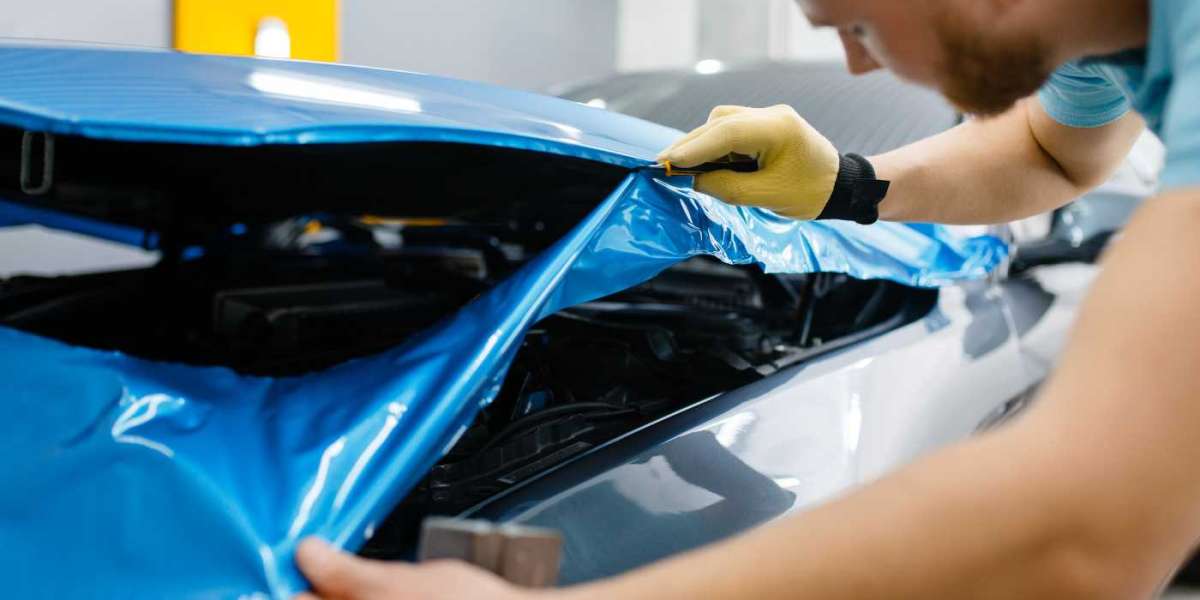Learn everything you need to know about car wrap removal—costs, safety, DIY steps, and professional tips—especially if you're considering trusted car wrap services in Houston.
Car wraps are a fantastic way to give your vehicle a fresh, customized look—whether for personal flair or business branding. But what happens when it’s time to remove that wrap? Can it be done without damaging your paint? How much does it cost? And is it worth hiring a professional?
This detailed guide covers everything you need to know about car wrap removal—from timelines to tools and trusted tips—especially if you're considering the best car wrap Houston has to offer.
1. Why Would You Want to Remove a Car Wrap?
Car wraps aren’t permanent—and that’s one of their biggest benefits. Common reasons for removing a wrap include:
Aging or Wear
Most high-quality wraps last 5 to 7 years depending on exposure to sun, heat, and moisture. Over time, vinyl can fade, crack, or peel at the edges, signaling it’s time to refresh or replace it.
Business Rebranding
For commercial vehicles, wraps often reflect current branding. When a business updates its logo or messaging, new wraps help maintain a consistent brand image.
Selling the Vehicle
Removing a wrap before resale can increase buyer appeal—especially if the original paint is in great condition underneath.
Personal Style Change
You might simply want a different look. Wraps allow easy color swaps without repainting, so removal is part of the style cycle.
2. Is Wrap Removal Safe for My Paint?
Yes—when done correctly, removing a car wrap is safe and won’t damage your factory paint. In fact, vinyl can help protect the paint from UV rays and minor scratches.
When Damage Might Occur
However, there are exceptions:
If the paint was already damaged or repainted before wrapping. If the vinyl is left on too long—beyond 7 years—it may become brittle or bond too tightly to the paint. Improper removal techniques (like scraping too hard or using sharp tools) can lead to paint lifting.
High-performance wraps installed on a properly prepped surface generally come off clean with no harm.
3. DIY vs. Professional Removal: Pros and Cons
Doing It Yourself
Cost-effective (just materials and time).
You control the pace.
Time-consuming—can take several hours.
Requires patience and heat management.
More risk of damaging paint if done improperly.
Heat gun or steamer.
Plastic scraper or fingernail-safe edge.
Adhesive remover spray (vinyl-safe).
Microfiber towels.
Clay bar and car wax for finishing.
Warm the surface: Heat loosens the adhesive, making it easier to peel. Peel slowly: Start from a corner and pull gently at a 30–45-degree angle. Remove leftover adhesive: Use a safe adhesive remover and soft cloth. Clean the surface: Wash, clay bar, and wax the car to restore shine.
Hiring a Professional
If you're searching for the best car wrap Houston services, many reputable shops offer wrap removal. Their expertise ensures safe, efficient work.
Fast and reliable.
No risk of harming your paint.
Professionals use steam machines and high-end removal agents.
Higher cost.
You’ll need to schedule the service.
Most car wrap shops will also prep the car for a new wrap or a polished finish if you’re going wrap-free.
4. What Does Car Wrap Removal Cost?
The cost of removing a car wrap depends on several factors:
Vehicle size: A sedan is easier (and cheaper) to unwrap than a large SUV or commercial van. Wrap age and condition: Older, cracked vinyl takes longer and may cost more. Original wrap type: Chrome and textured finishes are harder to remove than standard gloss or matte.
DIY tools and materials: $75–$200. Professional removal: $500–$1,000 for a full vehicle. Bundled service (removal + new wrap): Many shops offer discounts if you’re replacing the wrap.
If you're dealing with a trusted, well-experienced Houston shop, you're more likely to get a
5. Real-World Case Study: A Houston Business Fleet Makeover
A Houston-based food delivery company wrapped their fleet of ten vans in bright orange vinyl for brand visibility. After six years, the wraps began fading and curling at the corners.
They contacted a
The results:
Zero paint damage.
Vehicles were unwrapped, cleaned, and rewrapped in under a week.
A new branded design gave them a refreshed presence on the road—and helped boost delivery orders by 22% within the first quarter.
6. How Long Does It Take to Remove a Car Wrap?
Timing depends on the condition and size of the vehicle:
DIY: 6–12 hours for a full sedan. Professional shops: 2–5 hours using steamers and expert tools.
Partial wraps, like those on hoods or doors, can be removed in under an hour. Chrome or specialty vinyl may take longer due to their thickness and adhesive strength.
7. Pro Tips to Make Removal Easier
Don’t wait too long: Older wraps harden and bond tightly to the paint. Keep it warm: Warm temperatures help soften the adhesive. Start in small sections: Break the car down into panels (doors, hood, roof) for easier handling. Use the right chemicals: Avoid harsh solvents—only use products designed for automotive use. Prep the surface afterward: Clean thoroughly to remove adhesive residue, then polish or wax for a refreshed finish.
8. What Comes Next After Removal?
Once the wrap is removed:
You can
install a new wrap (great for brand updates or color changes). Or
return to the factory finish—ideal for resale or a fresh start. Either way, removal resets your car’s visual slate and opens the door to a new look or style.
If you’re ready for the next phase, consider consulting Houston-based experts known for
Conclusion
Removing a car wrap is a completely doable process—whether you're a DIY enthusiast or someone who values professional care. As long as the wrap was installed correctly and removed with care, your paint will stay protected.
For Houston drivers and businesses looking for seamless removal and high-quality results, turning to Graffiti Wrapss—a trusted name in the city’s wrap scene—is a smart, results-driven choice. Their well-experienced team offers both protection and precision, ensuring your next wrap (or clean slate) starts strong.




















